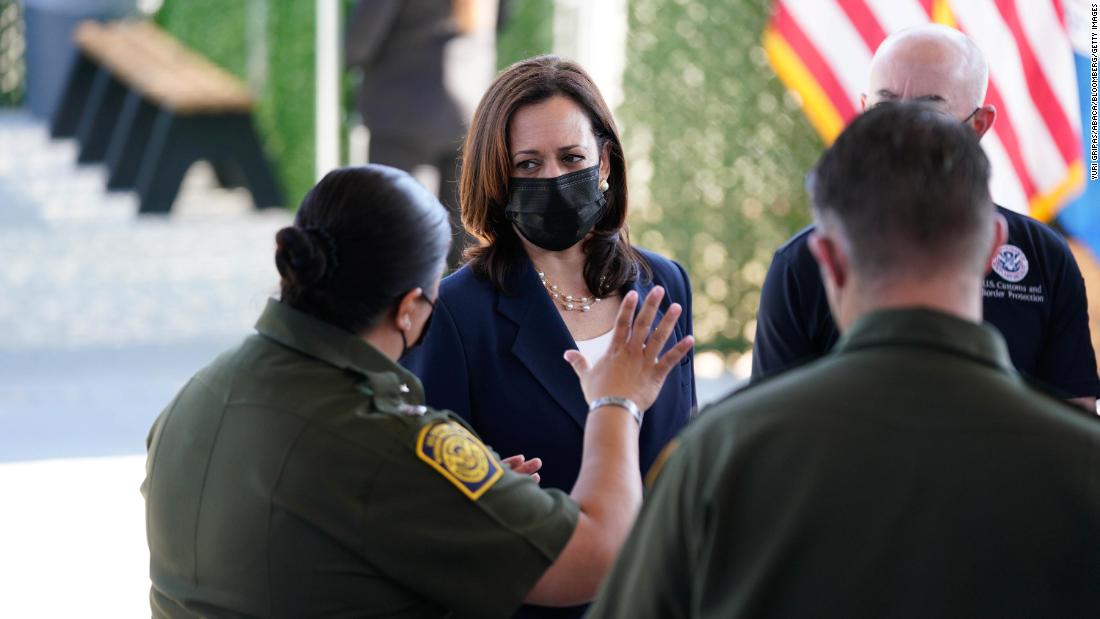Opinion: Kamala Harris came in to solve issues in Central America. But the problem is now much bigger.
“They have a great strategy mapped out for Central America, but the flows have changed. They go much beyond the Northern Triangle. Now, that’s complicated the narrative and the response,” said Andrew Selee, president of the Migration Policy Institute.
The State Department also funded Creole and Spanish-language digital ads targeting Haitian migrants to inform them of US border and immigration policies, a spokesperson told CNN.
The administration is also trying to balance maintaining regional partners and doubling down on enforcement on the US-Mexico border to discourage irregular migration. It’s a tricky balance that, at times, has created tension.
“It doesn’t correlate with this rhetorical, more humane approach to migration when they’re sending the deportees to a very remote area in the middle of the jungle where there’s no infrastructure to receive them,” a senior Guatemalan official told CNN.
Guatemalan officials took it up with Harris’s office and others within the administration in August, the official said. While it’s unclear whether the vice president intervened, the Department of Homeland Security is now sending flights directly to Guatemala City.
Instilling hope at home
The administration has gradually made inroads on those fronts. In the last 90 days, internet access was set up in an indigenous community of more than 4,000 people in Honduras, according to Jonathan Fantini Porter, co-founder and executive director of the Partnership for Central America. Fantini Porter also recently sampled the first cup off Honduras-sourced Nespresso coffee as the company makes inroads there.
The idea, Fantini Porter explained, is to develop a system where the various needs of a single individual or family are met, so that they’ll be more inclined to stay at home instead of migrate. If it’s a farmer, for example, that might include providing resources and tools to ensure they prosper by having buyers and access to banking.
Other private investments include Microsoft’s plan to expand internet access to as many as 3 million people in the region by July 2022 as well as develop community centers to help teach internet and digital skills to women and young people. And Mastercard hopes to help 5 million people in the region obtain access to banking services and help bring 1 million micro and small businesses into a digital banking system. The Partnership for Central America also intends to increase and stabilize incomes of 250,000 famers and support 1.5 million families, Fantini Porter said.
Experts say those actions are important to improving conditions on the ground over time and argue tackling migration across the hemisphere would require additional partnerships across the region, a point also acknowledged by Secretary of State Antony Blinken.
“We face a challenge that in many ways is unique with tremendous pressure from illegal migratory flows coming in different ways, different parts of the hemisphere,” Blinken said during a news conference in Mexico this month. “We have to have a stronger regional approach to this challenge.”
Authorities in South America have been monitoring the increased movement of migrants in the region for months. Many migrants who are fleeing worked informal jobs before the pandemic, and were especially vulnerable to falling into extreme poverty as economies tightened last year.
Despite the administration expelling more than 7,000 Haitians to Haiti, the migratory flow through Panama — one of the transit countries as people move north — has not slowed down, according to Panama’s foreign minister office.
Harris and her team have been coordinating with the State Department and the Department of Homeland Security which are engaged with other regional partners, like Panama, senior administration officials told CNN.
“The conversations with Panama are broader and fall into what we see as the migration management category,” one of the senior administration officials said. “While we’re very much coordinated, we aren’t having those conversations but others in the White House are.”
Harris’ focus, though, remains on the Northern Triangle.
To achieve sustainability, some level of government buy-in will be necessary, argued Matt Rooney, managing director of the Bush Institute-SMU Economic Growth Initiative and member of the Partnership for Central America working group. And that can be complicated by the systemic issues plaguing Central American governments.
“You have to ask yourself in that case: Why isn’t there more? And why are there companies in the United States who operate in industries that, where you could business in Central America, why aren’t they doing business in Central America?” Rooney said. “The answer to that question is that there are dysfunctions in the investment environment.”
Listed in the administration’s root causes strategy is fostering a “business enabling environment” by implementing reforms. Senior administration officials conceded that tackling corruption and effecting change within governments is a challenge but reiterated that for countries to thrive, infrastructure needs to be put in place to facilitate economic growth.
“There are going to be ups and downs along the way,” a senior administration official told CNN. “Really the only long-term solution to regional migration patterns that we see from those three countries in particular is to create the conditions for people to have hope at home.”
![]()


